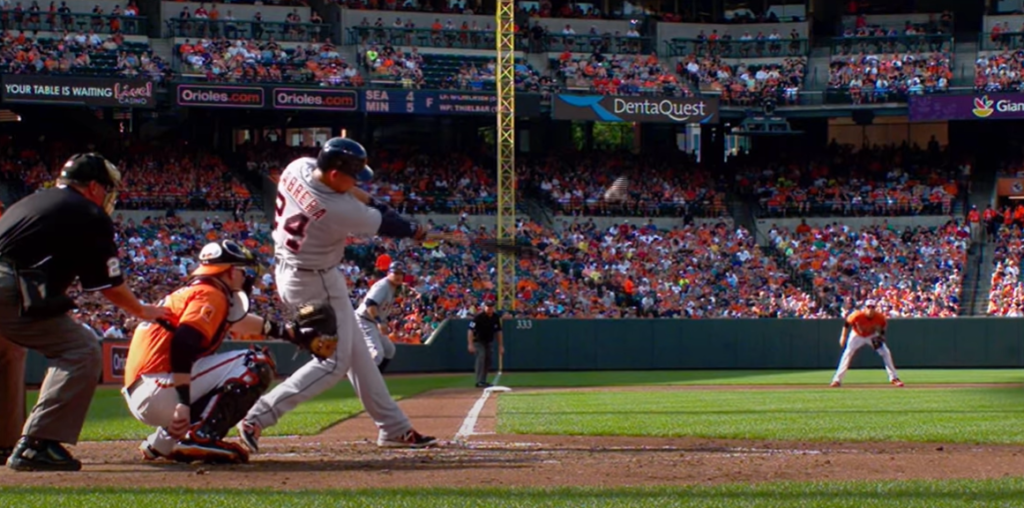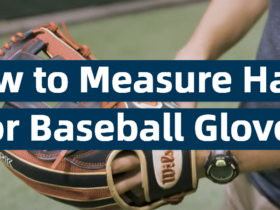Are you an avid baseball fan who is keen on mastering every alphabet of this legendary sport? Are you confused about what PA means in the context of baseball? Well, look no further – we are here to explain it! The acronym PA stands for plate appearance and it is a referenced statistic in almost all levels of professional baseball. How does it work and why should you care about the stat? Stick around as we unpack everything there is to know about plate appearances!
PA Meaning in Baseball
PA stands for “plate appearance” in baseball. A plate appearance is an offensive statistic that counts anytime a batter steps into the batter’s box and takes their turn at bat, regardless of the result of their at-bat. It does not include results where the pitcher intentionally walks a batter or the defense commits an error resulting in the runner reaching base safely on its own (in which case no plate appearance would be recorded). Plate appearances are a critical aspect of determining batting averages, slugging percentages, and other valuable offensive stats for baseball players. Additionally, a hitter’s total number of plate appearances is often used as an indication of how much playing time they have received in a season.
For pitchers, PA has another meaning: it stands for “pitching appearances.” This statistic records the total number of games a pitcher has appeared in during a season. It also includes starts and relief appearances, as well as any other game in which a pitcher recorded an out on the mound (such as when they are brought in to finish off an inning). Pitching appearances can be used to assess the quality and volume of work done by a certain pitcher over the course of one season, or over multiple seasons.
By tracking both plate appearances and pitching appearances, baseball fans and analysts are able to gain an accurate picture of each player’s performance over time. In this way, these two statistics allow for more meaningful comparisons between players across league history. [1]

How PA Relates to AB?
PA stands for “Plate Appearances” in baseball and relates directly to AB, which is an acronym for “At-Bats.” A player’s PA is determined by the number of times they go up to bat and make contact with a pitch, regardless of whether it results in a hit or not. This includes walks, sacrifice flies, and even hit-by-pitches. AB only counts when the batter swings at the ball and makes contact–it does not include walks or hit-by-pitches.
Because a hitter can still record a PA without having an AB on their stat line (ex: walks), their total PA will usually be higher than their total AB. The ratio between the two can provide a good indication of how often they are reaching base without having to get a hit. A high number of PA with just a few ABs might indicate that they are more patient and willing to wait for their pitch, rather than swinging at bad balls.
PA is also important when calculating other stats like batting average, on-base percentage, and slugging percentage. A high number of PA means that all these stats will be based on more data points, resulting in a more accurate portrayal of the player’s performance at the plate. Thus, understanding PA and its relationship to AB is essential for any serious baseball fan or analyst. [2]
What Does GP Mean In Baseball Stats?
GP stands for Games Played, and is a statistic used to indicate the number of games that a player has taken part in. This is an important stat as it gives an indication of how often the player is available to play in comparison with other players on the team. It also allows a manager or coach to determine who are reliable starters, and who can be relied upon when injuries occur. GP stats are especially useful over longer periods, such as entire seasons – allowing teams to analyze which players have been most available for their team during this time.
In addition, by comparing GP stats across different positions it can give an insight into what type of players are playing more at each position. Accurate GP stats are essential for any successful baseball team!

How Many PA Do You Need For the Batting Title?
In baseball, the batting title is awarded to the player with the highest batting average in a given season. To qualify for consideration for the batting title, a player must have a minimum of 3.1 Plate Appearances (PA) per-game played by their team during that season. In other words, if an individual has played in 100 games and his team has had 300 PA opportunities then he would need to have at least 310 plate appearances to be considered eligible for the batting title.
However, it is uncommon for players to play in every game within a single season so they often accumulate more than 3.1 PA per-game opportunity.
In addition, it also matters how efficiently a player uses each plate appearance as well as his overall batting average. In other words, even if two players have the same number of PAs during the season, one could still end up winning the batting title if their average is higher than that of their competition. Therefore, PA numbers are important for any serious contender for the batting title but they are not necessarily determinant when it comes to who will actually win it in any given year. [3]
How Do You Calculate PA In Baseball?
PA, or plate appearances, are used to determine the number of times a batter steps up to the plate in a game. PA is an important statistic for baseball because it helps measure how often batters come up to bat and how successful they are at these attempts. To calculate PA in baseball, take the sum of all four of the following statistics:
- At bats (AB): This records any time a player swings at or is hit by a pitch and does not get an out.
- Walks (BB): This records a free pass to first base given by the pitcher when there are four balls thrown outside of the strike zone.
- Hit by pitch (HBP): This records any time a player is struck by a pitch, regardless of whether it’s inside or outside the strike zone.
- Sacrifice flies (SF): This is an out recorded when a batter hits the ball in the air and another runner scores off of it.
When all four of these stats are added up, they will give you the total PA for that game or season. As one can see, PA is an important statistic to measure because it can tell coaches and scouts how often players come up to bat and how successful they are at doing so. It also serves as a good indicator of overall offensive performance since batters with higher PAs have more chances to make contact and drive in runs. Knowing this information can help teams make smarter decisions when it comes to their line up and strategy.
Overall, PA is an important statistic that can help coaches and scouts measure the offensive performance of players. It helps give insight into how often batters come up to bat and how successful they are at doing so. By adding up all four of the previously mentioned stats, you can easily calculate PA for a given game or season. Tracking this information can help teams make better decisions regarding their lineup and overall strategy, making it a key point in measuring success on the field. [4]

Who Has The Most PA In Baseball?
The most PAs in baseball belongs to Pete Rose, with 14,053 PAs in his career. He is followed by Carl Yastrzemski (13,992), Cal Ripken Jr. (13,882) and Ty Cobb (13,739). All of these players had lengthy careers and were able to accumulate more PAs than other players throughout the course of their careers. Other notable players who have accumulated a significant number of PAs include Hank Aaron (12,364), Derek Jeter (11,195), Rickey Henderson (10,961) and Stan Musial (10,972). The current active leader in PA is Albert Pujols with 9390 PA as of April 2021.
Additionally, there are some players that have achieved a high number of PAs over the course of a short career, such as Ichiro Suzuki (9,310) and Julio Franco (8,084). It is important to note that these totals do not include playoff appearances where players may achieve additional PAs.
The ability to accumulate a large number of PAs is a testament to a player’s skill and longevity in the game. It can also be seen as an indication of their value to teams throughout their careers. As such, it should come as no surprise that the players with the most PA in baseball are held in high regard by many fans and analysts alike. [5]
FAQ
What does PA mean in baseball?
PA stands for Plate Appearances. This is a statistic in baseball that measures the number of times a player has come to bat or has been put on base as a result of being awarded walks, hit by pitch, sacrifice bunts/flies, or being hit into a fielder’s choice. It does not include strikeouts, caught stealing (CS), defensive interference (DI), catcher’s interference (CI) or foul tips that are caught by the catcher. The plate appearance is important because it gives an indication of how much a batter has contributed towards his team’s total runs scored and earned run average (ERA).

How do you calculate PA in baseball?
To calculate a player’s plate appearances in baseball, take the sum of their at bats (AB), walks (BB), hit by pitch (HBP), sacrifice flies/bunts (SF/SH) and awarded first base as a result of fielder’s choice or interference (FC/DI). PA = AB + BB + HBP + SF/SH + FC/DI. This formula will give you an accurate representation of how many times a batter came to bat with the potential to score or advance runners.
Do pinch hitters count toward PA?
Yes, pinch hitters do count towards a player’s plate appearance statistic. Whenever a pinch hitter is used, it counts as one plate appearance for that player regardless if they get out or not. What is the difference between PA and AB?Plate Appearances (PA) measure the total number of times a batter has come to bat while At Bats (AB) measures only those plate appearances that ended with the batter either getting out or reaching base safely. In other words, Plate Appearances include all at bats plus walks, hit by pitches, sacrifice bunts/flies, and being awarded first base as a result of fielder’s choice or interference. Therefore PA is always greater than or equal to AB.
What do you mean by an “unsuccessful plate appearance” in baseball?
An unsuccessful plate appearance would be any time a player comes to bat but does not reach base safely. This can be a strikeout, pop fly, ground ball, or any other out that the batter makes while at bat. Unsuccessful plate appearances are not counted towards the player’s overall PA statistic but do count toward their AB total.
What role does Plate Appearances play in determining batting average?
Plate Appearances are used to calculate a batter’s batting average because they measure how many times a batter has come up to bat with the potential to reach base safely. In order for a batter’s batting average to be accurate, it must take into account all possible PA rather than just at bats alone. Therefore, calculating BA requires dividing the number of hits (H) by total plate appearances (PA).
Who has the most PA in baseball?
The all-time leader in plate appearances is Pete Rose, with 14,053. He is followed by Rickey Henderson (13,956), Ty Cobb (12,964), Barry Bonds (12,606) and Carl Yastrzemski (12,388).

How can Plate Appearances be used to measure offensive success?
Plate Appearances are important in measuring offensive success because they include every time a batter has the potential to reach base safely. This means that by looking at a player’s PA statistic you can get an accurate gauge of how often he was up to bat and had the chance to score or advance runners. It also helps give an indication of how good a batter’s on-base percentage (OBP) is – the higher a player’s PA, the better his OBP is likely to be. Plate Appearances can also help measure efficiency as it allows you to see how often a batter was able to get on base without making an out. Lastly, Plate Appearances can give an indication of how successful a team’s offense has been over the course of a season.
What does PC mean in baseball?
In baseball, PC stands for pitcher count. A pitcher count is a statistic that tracks the number of pitches thrown by a single pitcher in a given game or season. The pitcher count can be used to measure the effectiveness and endurance of a particular pitcher over time. It also serves as an indication of how well the team’s overall pitching staff is performing. Additionally, it allows managers to make decisions about when to make substitutions or pull pitchers based on fatigue or performance level. With all this information readily available, pitchers’ counts are essential for teams looking to maximize their chances of success on the diamond.
What does BB mean in baseball?
BB stands for ‘base on balls’, which is another way of saying a walk. This occurs when a pitcher throws four balls outside the strike zone, which forces the batter to advance to first base. A BB does not count as an official at-bat, meaning it won’t affect any batting averages or stats. Unlike hits or strikes, walks are not recorded as part of a player’s individual statistics. However, they do contribute to team runs and wins in some ways. For example, if a batter with runner(s) on base takes a walk, one or more of them may be able to score depending on the situation. Thus, taking walks can have positive effects on teams even though they don’t show up in individual stat-lines.
What is minimum PA baseball?
Minimum PA (Plate Appearances) is the number of times a batter must come to the plate in order for their batting average and other stats to count. Generally, this rule applies only to players who are new to the team or have played fewer than 20 games. This ensures that their stats accurately reflect their performance over a larger sample size. A player’s minimum PA requirement will vary depending on the league they’re playing in, but it typically ranges from 50-100 Plate Appearances. Any ABs (at bats) occurring after a player has reached their minimum PA will still be counted towards that player’s statistics.
Useful Video: What Does PA Mean in Baseball?*
Conclusion
In conclusion, PA in baseball stands for “plate appearances”. This term is used to measure a batter’s performance and their ability to get on base. It is an important statistic that can help teams decide which players are successful at the plate. Additionally, it also helps coaches analyze trends in a player’s hitting habits and make changes accordingly. Baseball fans can use this knowledge to appreciate the game even more!
References:
- https://wezen-ball.com/what-does-pa-mean-in-baseball/
- https://www.sportslingo.com/sports-glossary/p/plate-appearances-pa/
- https://www.metroleague.org/what-does-pa-mean-in-baseball/
- https://baseballtrainingworld.com/what-is-an-at-bat-in-baseball/
- https://sabr.org/journal/article/the-infinitely-long-mlb-plate-appearance/










Leave a Review